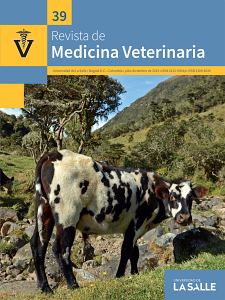Abstract
<p>Elbow dysplasia (ED) is a general term used to name a polygenic hereditary disease in dogs. Three bones are involved humerus, ulna and radius creating three articulations: humeroradial, humeroulnar, and radioulnar. Four processes characterize the disease, either independently or combined: I) fracture in the medial coronoid process; II) osteochondritis dissecans of the humerus condyle; III) ununited anconeal process; and IV) radius-ulna incongruence. To contribute to a better understanding of the disease, this work enquires whether the elbow joint functional mechanics is associated with the ED. To do so and using the I-DEAS 9.0 and ABAQUS 6.3 software that engineers use for calculating the effort distribution and delivery in grid structures a joint 3D model was designed based on computer-aided tomography. This way accurate information has been obtained about the distribution of the forces acting in the elbow articular surface, both when holding the animal weight loads and after a selective muscle action. This biomechanic model has enabled to find different associations between the ED injured areas and the articular regions making the greater mechanic efforts. Likewise, it allows focusing the radiological exploration of animals with potential DE and designing therapeutic habits for the trauma treatment. All this may be the starting point for studying other more complex epidemiological and biomechanic conditions</p>References
Nickel R, Schummer A, Seiferle E. The Anatomy of the Domestic Animals, Vol. 1. Berlin, Hamburg: Paul Parey; 1986
Dyce KM, Sack WO, Wensing CJG. Textbook of Veterinary Anatomy, Philadelphia: W. B. Saunders Company; 1987. 834 p
Adams DR. Anatomía canina, estudio sistémico, Zaragoza, España: ed. Acribia S.A.; 1988. 518 p
Habel, R. Anatomía Veterinaria Aplicada. Zaragoza, España: ed. Acribia, S.A.; 1988. 312 p
Budras K, Fricke W, Salazar I. Atlas de Anatomía del Perro. Madrid: Interamericana McGraw-Hill; 1989. 106 p
Evans HE. Miller´s Anatomy of the Dog. 3rd ed. Philadelphia: W. B. Saunders Company; 1993
Ruberte J, Sautet J. Atlas de Anatomía del Perro y del Gato. Vol. 2, Multimédica; 1996
Schaller O. Nomenclatura Anatómica Veterinaria Ilustrada. Zaragoza, España: ed. Acribia, S.A.; 1996. 622 p
Barone R. Anatomie Comparee desl Mammiferes Domestiques: Artrhologie et Myologie. Paris: ed. Vigot Freres; 1980
Gil J, Gimeno M, Laborda J, Nuviala J. Protocolos de disección. Anatomía del perro. 3ª ed., Barcelona: Ed. Asis, S.A; 2012. 568 p
Laborda J, Gil J, Gimeno M, Unzueta A. Atlas de Artrología del Perro. Pfizer Salud Animal; 2005. 100 p
Morgan JP, Wind A, Davidson AP. Hereditary Bone and Joint Diseases in the Dog. Verlag und Druckerei, Hannover: Schlutersche GmbH & Co. KG; 2000
Degner DA. Elbow Dysplasia in Dogs. Vet Surgery Central Inc; Recuperado de http://www.vetsurgerycentral.com/elbow_dysplasia.htm. 2004
Hibbit HD, Karlsson BI, Sorensen RP. ABAQUS-EPGEN: A general-purpose finite element code. Volume 1 (Revision 2). User's manual United States: N. p., 1984. Recuperado de https://www.osti.gov/biblio/6693820
Getty R, Sisson S, Grossman JD. Anatomía de los animales domésticos. Tomo II 5 ed., Salvat; 1982. Recuperado de https://www.academia.edu/33738651/ANATOM%C3%8DA_DE_LOS_ANIMALES_DOM%C3%89STICOS
Lewis RH. Development of elbow arthroplasty (canine) clinical trials, In: Proceedings. 6th Annual American College of Veterinary Surgeons Symposium; 1996 October; San Francisco, USA.110 p
